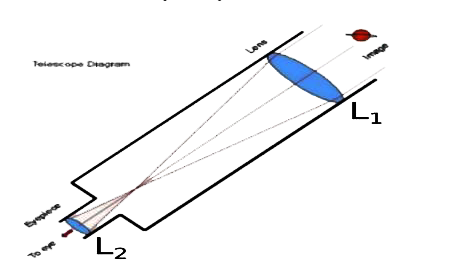Savitri had to make a model of a cylindrical Kaleidoscope for her science project. She wanted to use chart paper to make the curved surface of the Kaleidoscope. What should be the area of chart paper required by her, if she wanted to make a Kaleidoscope of length 25 cm with a 3.5 cm radius?
Length=25cm
Radius=3.5cm
Area of chart paper required =CSA of cylinder
=2πrh
=2×227×3.5×25
=550cm2
∴ Area of chart paper required =550cm2
Topper's Solved these Questions
Similar Questions
Savitri had to make a model of a cylindrical Kaleidoscope for her science project. She wanted to use chart paper to make the curved surface of the Kaleidoscope. What should be the area of chart paper required by her, if she wanted to make a Kaleidoscope of length 25 cm with a 3.5 cm radius?
View SolutionSavitri had to make a model of a cylindrical kaleidoscope for her science project. She wanted to use chart paper to make the curved surface of the kaleidoscope. (see Fig 13.10). What would be the area of chart paper required by her, if she wanted
View Solution
Knowledge Check
- Question 1 - Select One
Deepali makes a model of a cylindrical kaleidoscope fo her science project. She uses a chart paper to make it. If the length of the kaleidoscope is 25 cm and radius 3.5 cm, the area of the paper she used, in square cm, is (π=227)
A1100B550C500D450 - Question 2 - Select One
From a circular sheet of paper of radius 25 cm, a sector area 4% is removed. If the remaining part is used to make a conical surface , then the ratio of the radius and height of the cone is :
Aa. 16:25Bb. 9:25Cc. 7:12Dd. 24:7 - Question 3 - Select One
Sumati wanted to see the stars of the night sky. She knows that she needs a telescope to see those distant stars. She finds out that the telescopes, which are made of lenses, are called refracting telescopes and the ones which are made of mirrors are called reflecting telescopes.

So she decided to make a refracting telescope. She bought two lenses, L1 and L2. out of which L1 was bigger and L2 was smaller. The larger lens gathers and bends the light, while the smaller lens magnifies the image. Big, thick lenses are more powerful. So to see far away, she needed a big powerful lens. Unfortunately, she realized that a big lens is very heavy. Heavy lenses are hard to make and difficult to hold in the right place. Also since the light is passing through the lens, the surface of the lens has to be extremely smooth. Any flaws in the lens will change the image. It would be like looking through a dirty window.
Sumati did some preliminary experiment with the lenses and found out that the magnification of the eyepiece (L2) is 3. If in her experiment with L2 she found an image at 24 cm from the lens, at what distance did she put the object?A72 cmB12 cmC8 cmD6 cm
Find the area of the chart paper used to make the curved surface of a model of cylindrical kaleidoscope of length 25 cm and radius 3.5 cm
View SolutionAmita wants to make rectangular cards measuring 8cm×5cm. She has a square chart paper of side 60cm. How many complete cards can she make from this chart? What area of the chart paper will be left?
View SolutionDevika has a square piece of cloth of area 9m2 and she wants to make 16 square-shaped scarves of equal size out of it. What should possibly be the length of the side of the scarf that can be made out of this piece?
View SolutionAnjali in an electrician and she has to repair an electric fault on a pole of height 5 m. She needs to reach to a point on the pole of 1.3 m below the top of the pole to undertake the repair work. What should be the length of the ladder that she should use which, when inclined at angle of 60° from the horizontal, would enable her to reach the required position? Further, how far from the foot of the pole should she place the foot of the ladder? What value is indicated from the question?
View SolutionVedika has 23.5 metres of cloth. She used it to make 5 curtains of equal size. If each curtain required 4 metres 25 cm of cloth to make, how much cloth still remains with her ?
View Solution

